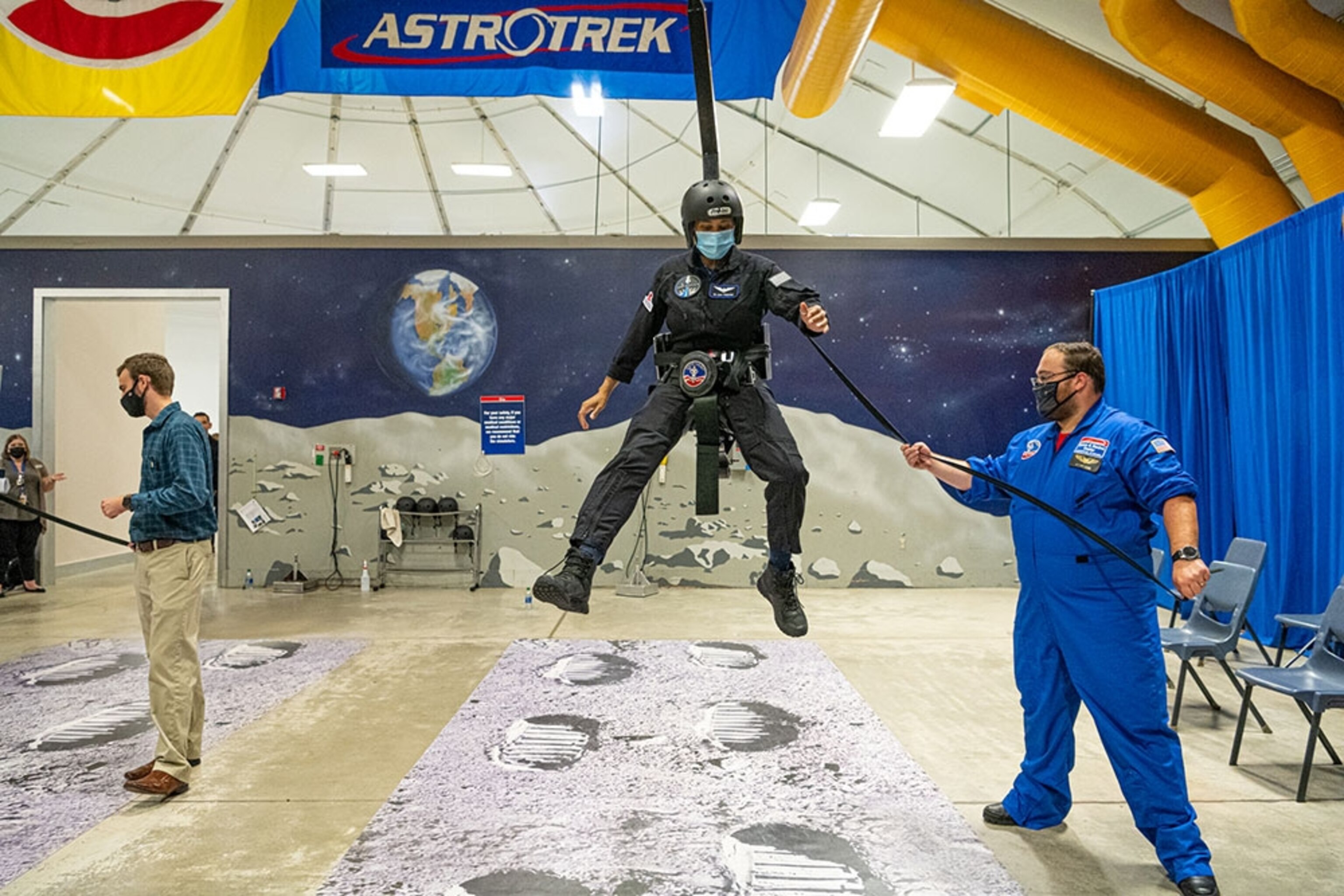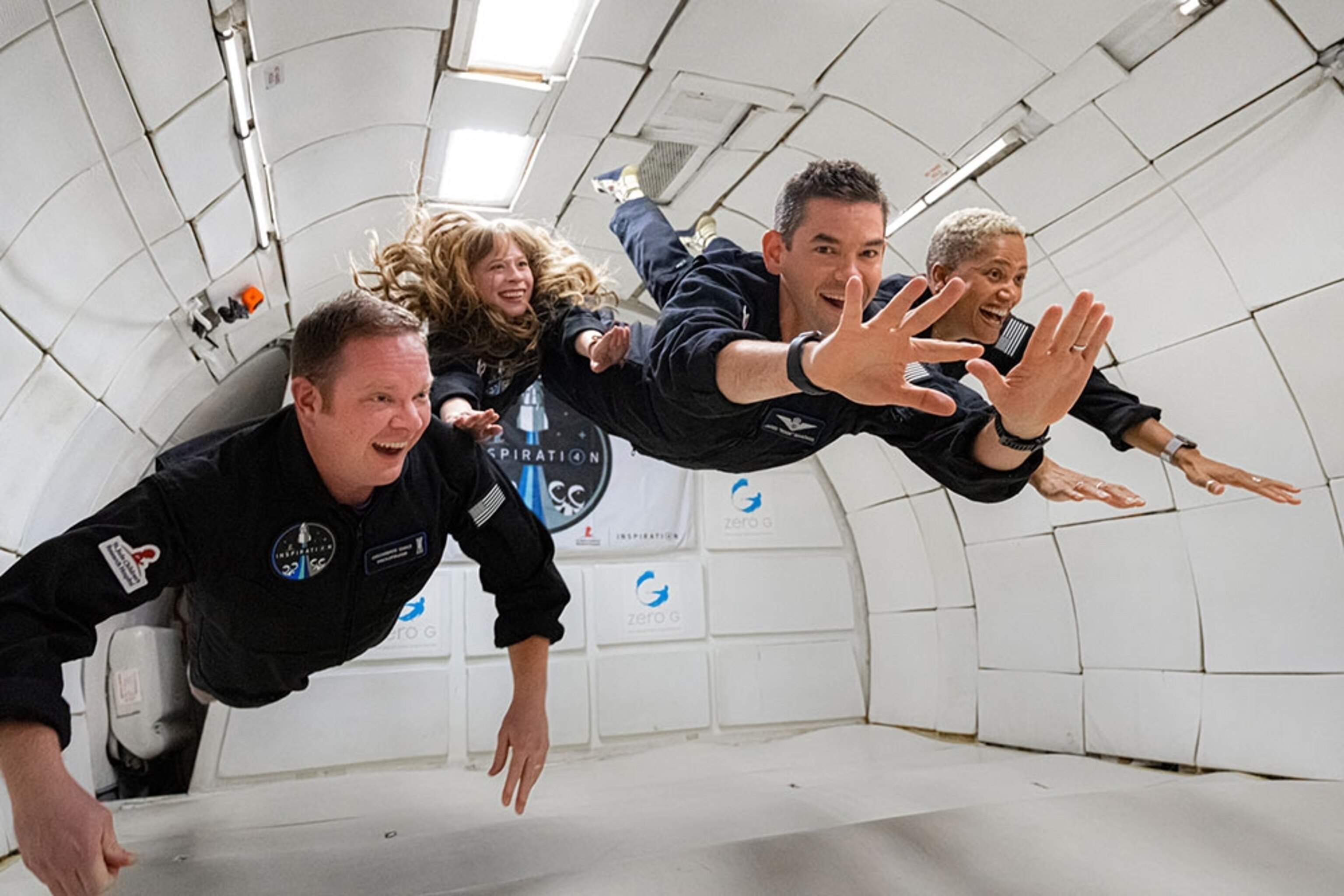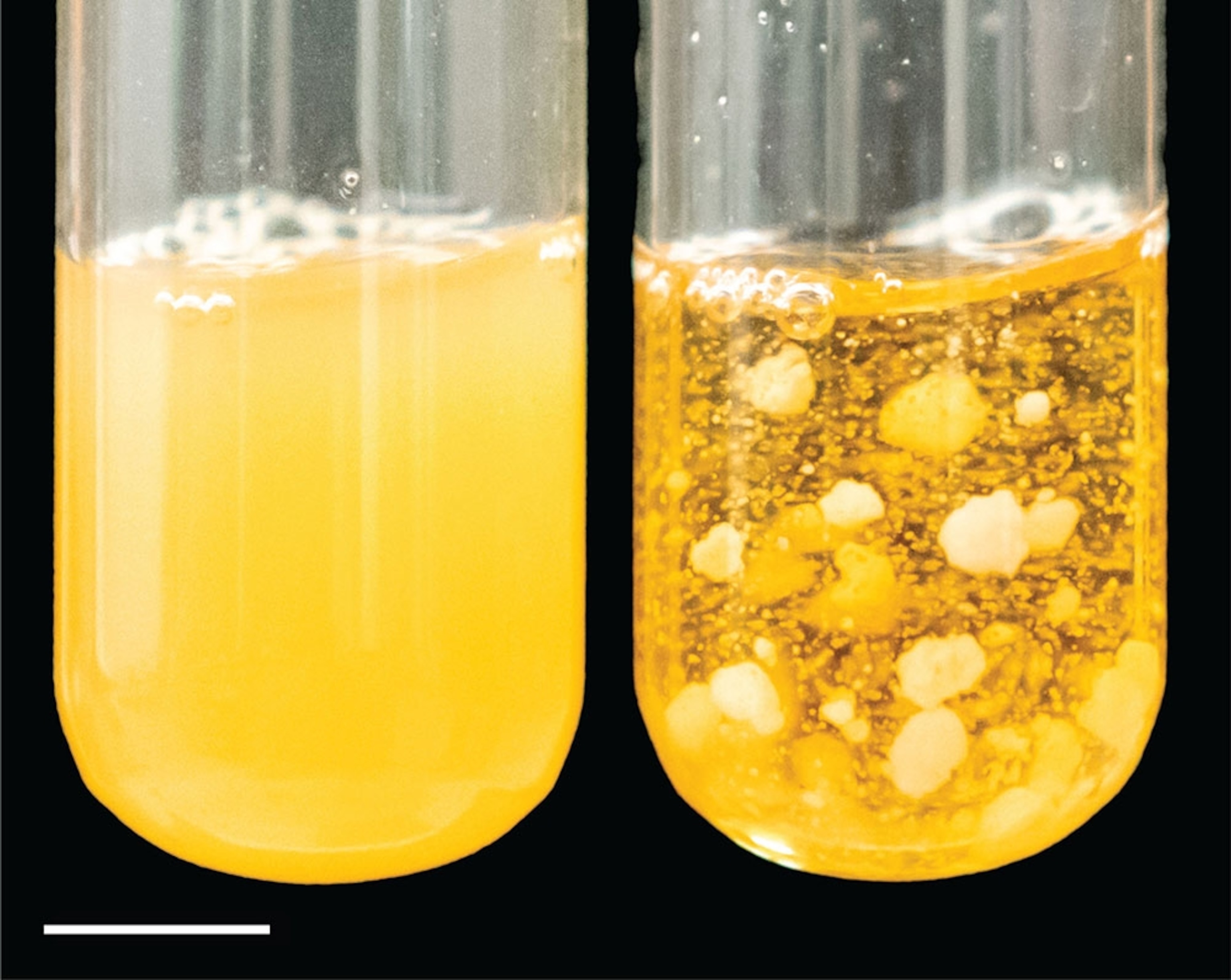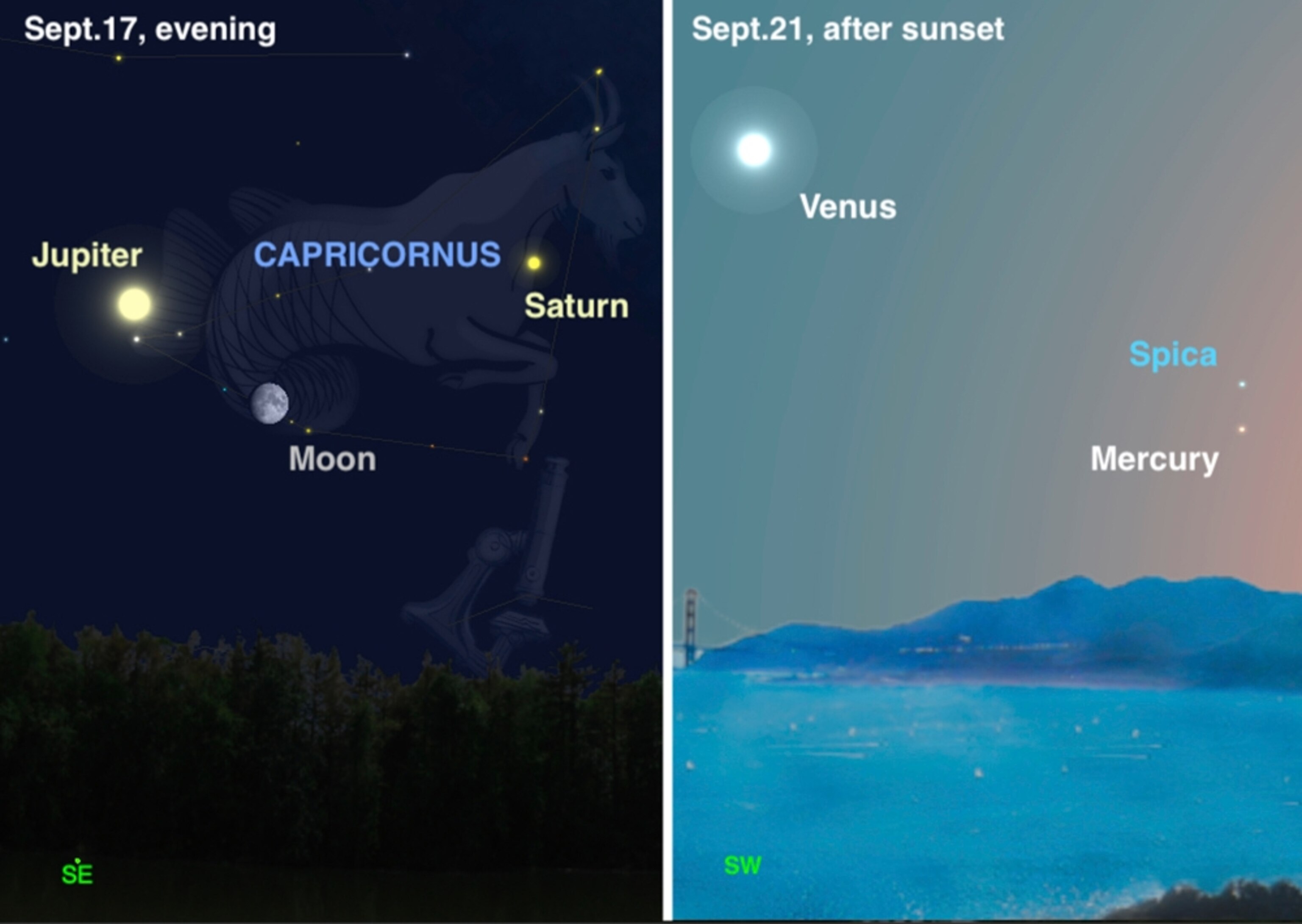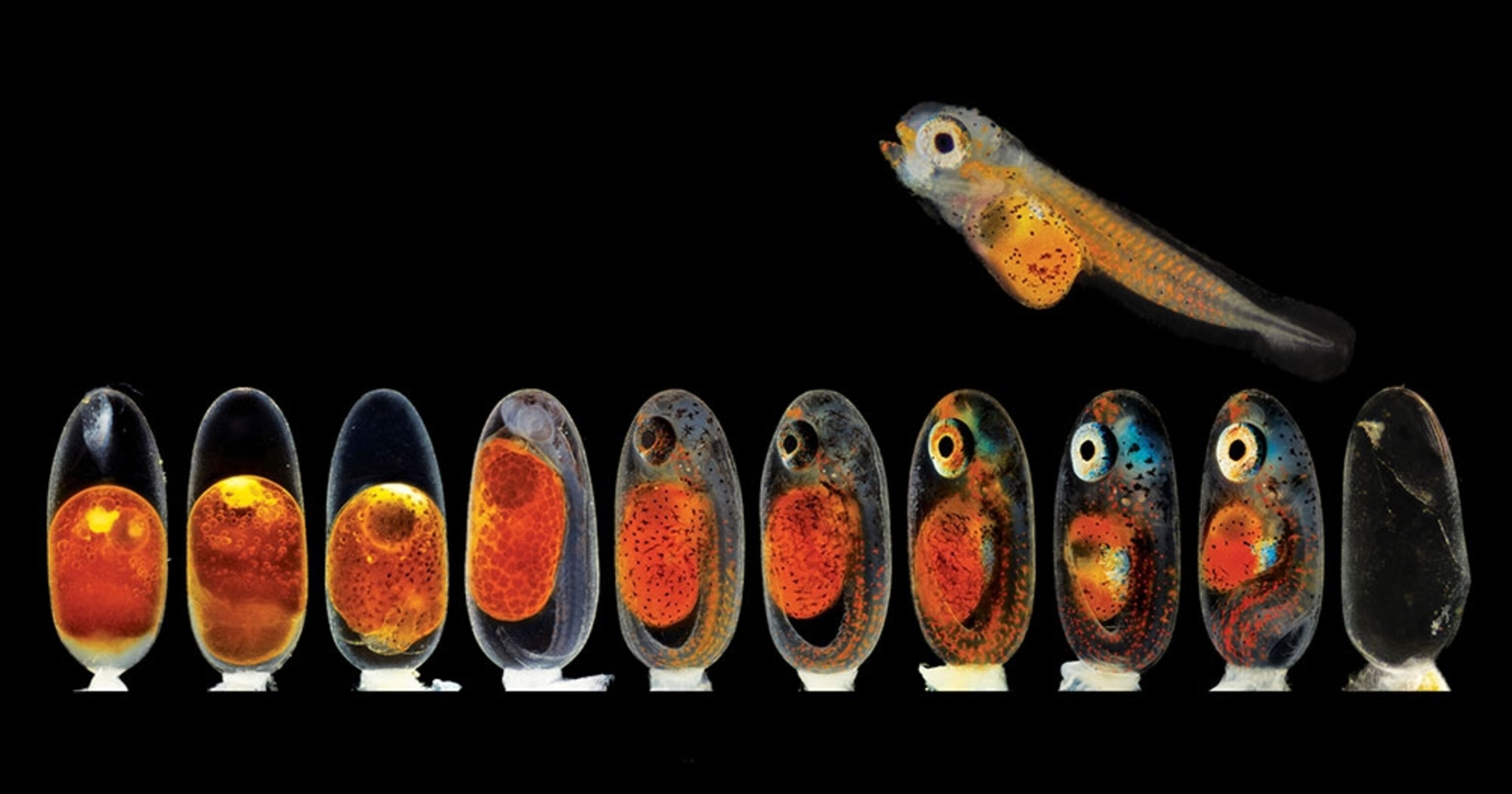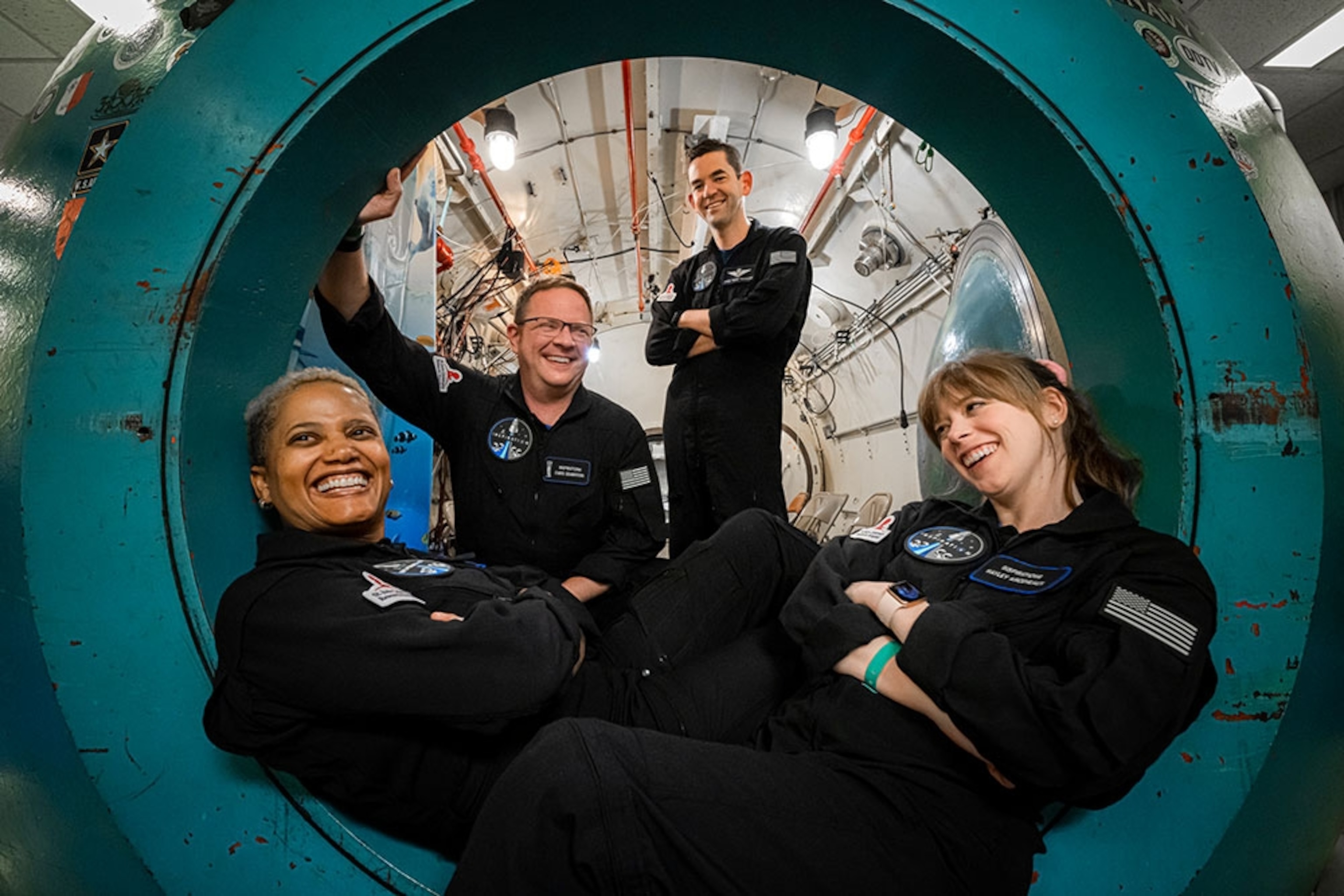
Will space missions include more average people?
In today’s newsletter, the countdown to Space-X's launch; award-winning ‘tiny wonders’; how to get to sleep earlier; way too close to a tornado ... and bringing back the woolly mammoth?
This article is an adaptation of our weekly Science newsletter that was originally sent out on September 15, 2021. Want this in your inbox? Sign up here.
By Victoria Jaggard, SCIENCE executive editor
It sounds like the kind of purely hypothetical question you ask as an icebreaker at a cocktail party: If you could take three people with you to spend three days orbiting Earth, who would you pick?
That’s essentially what billionaire Jared Isaacman got to do for the Inspiration4 mission, which is slated to launch as soon as later tonight carrying the world’s first entirely civilian crew on a commercially built rocket. Isaacman spent an undisclosed amount to charter a SpaceX Crew Dragon capsule and blast himself and three crewmates to an altitude of 360 miles—higher than the orbit of the International Space Station. The four-person team (pictured above during altitude chamber training) will spend three days circling the planet before splashing down off the Florida coast.
Isaacman is already a trained jet pilot, and to his credit, he didn’t simply round up three of his best chums for the orbital ride. For this historic flight, he made a point to use the mission as a fundraising campaign for St. Jude Children’s Research Hospital in Tennessee. One seat was donated to St. Jude physician assistant Hayley Arceneaux, a former cancer patient turned staffer who will become the first person with a prosthesis to go to space. The second seat goes to Chris Sembroski, a data engineer who entered a raffle by donating money to St. Jude. Sembroski was among 72,000-odd people who donated, raising a total of $13 million for the hospital. The final seat goes to Sian Proctor (pictured training below), a geosciences professor who won her spot by entering a contest for digital entrepreneurs.
Isaacman’s crew has its advantages. An experienced pilot, a medical specialist, a scientist, and an engineer sound like solid picks. But the crew selection process was definitely not as rigorous as a traditional NASA mission. Professional astronaut crews are hand-picked by mission managers for their complementary skills and expertise in mission objectives. They then spend years training together in various environments—from underwater labs to deep caves—so they can build rapport and communication skills. By contrast, the Inspiration4 crew only got started on their prep work this past February. They climbed Mount Rainier together in addition to more standard astronaut training activities such as centrifuge runs, classroom lectures, and simulator/weightlessness drills (pictured below). But assuming everything goes to plan, they will become the first humans in orbit who never went through any official government training.
Spending three days in a tight space with relative strangers inside and the lethal void of space outside has never exactly been high on my personal bucket list. Still, the mission feels aptly named, since it is inspiring to see people who don’t come from the rarified ranks of the astronaut corps taking on this challenge. Now the big question is whether missions like this one will ever become truly affordable to anyone who isn’t personally rich or selected by a billionaire—and what that might eventually mean for humankind’s future on and beyond Earth?
Do you get this daily? If not, sign up here or forward this to a friend.
TODAY IN A MINUTE
Beyond bread and beer: Yeast is a humble fungus, but a new experiment using it may give clues to how life evolved from single cells to an explosion of species. Researchers seeking complex organisms suspended ancestral yeast clusters in liquid. After 600 days, the original cluster (pictured, above left) formed much bigger clusters (above right). The onetime glob, 100 times weaker than gelatin, strengthened to contain 450,000 cells and became harder than wood, Michael Greshko reports.
How to wake up early: Easier said than done, right? Based on new research, experts suggest getting earlier exposure to morning light, such as a walk as soon as possible after you rise. Don’t drink coffee or nap after 3 p.m. At night, stop eating after 7 p.m. and turn down the lights, avoiding screens before bedtime. Popular Science reports that participants in the study who managed to get to bed and wake up earlier than normal reported less depression and stress.
Bigger than COVID-19: More than 200 medical journals point to the varied and overwhelming life-threatening events of climate change as being a deadlier effect overall than one single virus, even one that has taken more than 660,000 American lives. The journal editors urge that the world not wait until the pandemic passes to cut emissions. Amy McKeever breaks down the various ways that climate change causes harm.
What? Yes, scientists are deliberately infecting volunteers with COVID-19. But why? They are “human challenge trials”—a way for scientists to collect valuable information about how diseases work much more quickly than relying on messy and uncertain data from the real world. Since World War II, about 40,000 volunteers have allowed themselves to be infected with diseases ranging from malaria and typhoid to dengue fever and cholera, the Economist reports.
INSTAGRAM OF THE DAY
Getting ready to drop: Photographer Mike Olbinski shoots weddings, but he also chases storms—and this was one of the highlights of his year. “Watching this tornado form right in front our eyes on May 16, 2021, near Sudan, Texas, was incredible,” he writes. His time-lapse video, posted to our Instagram page, is mesmerizing. The tornado, he said, dropped harmlessly in a field, nowhere near structures or people, and lasted five to 10 minutes.
Related: Chasing the world’s largest tornado
Subscriber exclusive: The last tornado chase
SEE THE TORNADO
THE BIG TAKEAWAY
Making a cold-resistent elephant: That’s what Harvard geneticist George Church says he’s up to with his new company. Church aims to use DNA from the extinct woolly mammoth to engineer a hybridized Asian elephant that could thrive in Arctic climates. He also wants to transform today’s mossy tundra into grassy steppes, which could reduce future climate change by slowing permafrost thaw. But there’s no mammoth-elephant hybrid coming soon, Michael Greshko reports. Even the company’s rosiest projections say it will be a half-dozen years before a calf is produced. In the meantime, critics point to the many scientific and ethical hurdles they’ll have to overcome. (Pictured above, a Damien Hirst sculpture of a gilded mammoth skeleton, in Miami Beach.)
THE NIGHT SKIES
Hello, Saturn: As darkness falls on Thursday look toward the low southeast sky for the waxing gibbous moon paying a visit to Saturn. The ringed giant planet looks like a bright yellow star, and you’ll find that both objects look quite nice together through binoculars, while Saturn’s rings will show through even the smallest of telescopes. By Friday the moon will glide toward the brighter planet Jupiter, still nestled within the constellation Capricornus. Monday sees the full harvest moon rise in the east after sunset. It will be the closest full moon to the fall equinox, on September 22. And after sunset Monday or Tuesday, try to spot faint planet Mercury posing near the blue star Spica low in the southwest. — Andrew Fazekas
Related: The ‘small wonders’ unlocking secrets of our solar system
IN A FEW WORDS
There's always a narrative difference between what a man and woman see in the world and we need to have a fuller vision of what is out there.
Alifa Haque, Bangladeshi marine biologist, zoology lecturer; Nat Geo Explorer, From: Meet the scientist saving sawfish from ‘cancer cure’ myth
THE LAST GLIMPSE
Baby steps: Photographer Daniel Knop reveals the transformation of a clownfish from a bright-orange ball of cells to a small swimmer. Captured over the course of a week, this series of images was taken with a microscope’s amplification—and is one of this year’s honorees in the Nikon Small World Photomicrography Competition. Maya Wei-Haas describes several of the most visually stunning images selected by Nat Geo photo editor Todd James.
Today’s newsletter has been curated and edited by David Beard and Monica Williams, and Jen Tse and Heather Kim selected the photos. Have a link or an idea to share? We'd love to hear from you at david.beard@natgeo.com. Thanks for reading.
